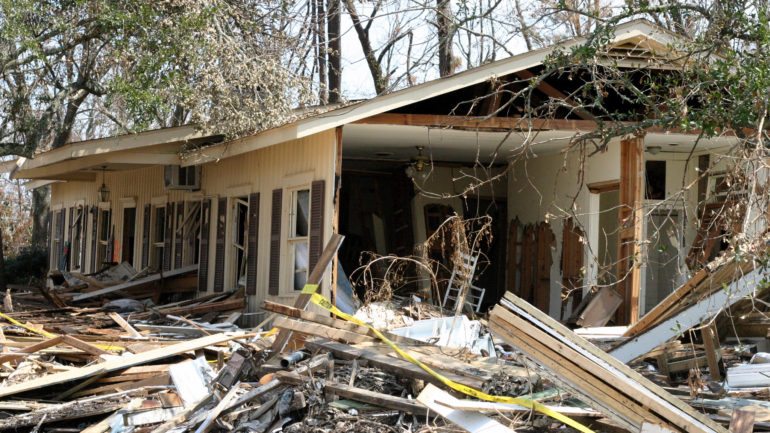Editor’s note: This post was originally published on September 25, 2016. In light of the string of destructive tornados that hit Louisiana on February 7, 2017, we wanted to refresh and bring this post to the forefront. We hope it provides practical advice for ministry when devastating events like this occur in your area. We are praying for those affected.
Leading Students When A Disaster Hits a Community: Lessons Learned From the Louisiana Flood of 2016
On August 12, 2016, a storm with no name flooded south Louisiana. More than 500,000 people (11% of the state’s population) were affected by the flood. Some homes only flooded an inch or two, while others had water up to their rooftops.
Our church community is located in New Orleans, and we were not affected by the storm — but as we watched the floodwaters rise in Baton Rouge, memories of hurricane Katrina came flooding back for most of our community. The students we minister to have spent the majority of their lives recovering from Katrina. Baton Rouge played an integral part in helping New Orleans recover, and now it’s New Orleans’ turn to help “Carry the Baton.”
The magnitude of need here in Louisiana is overwhelming, and leading students through a disaster has its challenges.
Below are some thoughts for leading students when a disaster hits your community:
1. Cancel weekend worship services.
One thing we wish we would have thought to do in that first week was to cancel weekend worship services so we could deploy our entire congregation to help with the disaster relief efforts in Baton Rouge. Over 12,000 people were in shelters throughout the city, all in need of the most basic essentials. The idea to cancel services didn’t occur to us until we had to tell a flood victim we couldn’t come help him gut his home on Sunday because of our obligation to Sunday youth ministry programming. Right or wrong, it just felt funky to say.
2. Post on social media specific ways people can help.
We wrote a simple post encouraging people to pray, share, and give. We gave details to guide people on how to pray. We asked them to “share” the post to help raise awareness about the flood. We included a link to donate if they felt led to give. We felt overwhelmed at the number of folks asking how to help, but we were the only point of contact for many of our long distance friends who were wanting to show their support.
3. Shine light on the Kingdom narrative.
Emotions run high in crisis. Our hurt and frustration hit its max when no one outside of Louisiana seemed to know about our GINORMOUS flood. Baton Rouge was inundated with news crews when shootings happened a month prior to the flood, but when the community rallied as homes were destroyed, no one came to tell the story. Disaster isn’t a time to rant, but it is time to shine light on the Kingdom narrative happening in the midst of the struggle. Tell the one-another stories of neighbors helping neighbors, of families opening their homes to strangers, of fishermen using their boats to rescue people from their flooded homes (do a web search for “Cajun Navy”), and of cooks showing up to shelters with their personal grills and gumbo pots to feed victims. Hate narratives might sell newspapers, but the Kingdom narrative inspires people to live differently. Tell the Kingdom story, and encourage your students to do the same.
4. Engage your students in the relief effort.
The flood of 2016 is not a “mission trip” for our students, it’s a mission effort that will become part of our youth group’s story over the next few years. During the first phase of recovery our students delivered cots to shelters, gutted flooded homes, organized supply drives in their schools, and served food to families trying to put their lives back together. Currently, our group is moving on to the second phase of recovery by looking to meet a more specific need rooted in our students’ passion for music. Youth all over south Louisiana lost their instruments in the flood. In response, we are collecting instruments to give to teens affected by the flood.
5. Do LOVE Today.
One of the first questions our group asked during the flood was, “What do we do?” Guided by 1 Corinthians 16:14, “Do everything in love,” our students answered their question with the slogan, “#doLOVEtoday.” We posted our slogan on social media (follow us on Twitter @dolovetoday) and took it to the streets. Our students are determined to start a movement, and we are determined to equip them to do it.
We hope disaster doesn’t hit your community, but if it does, call us up. We’re getting pretty good around here at gutting homes, doing love, and living into the Kingdom story.
-The Leverts


Thanks for posting this.
I am Youth Ministry Director for Institute of Congregational Trauma and Growth. We offer great resources for youth leaders caring for youth and families who have experienced trauma. Check us out at ictg.org
Thanks for this wonderful ministry story! The youth ministry I serve as director is making hundreds of health kits to send to all those affected by the floods. Stuff like washcloths, toothbrushes, combs, and soap bars are needed when everything is lost. Even if a lot of the damaged area is along in the recovery process, it’s good that kits like these are made and stock-piled for when emergencies arise again.